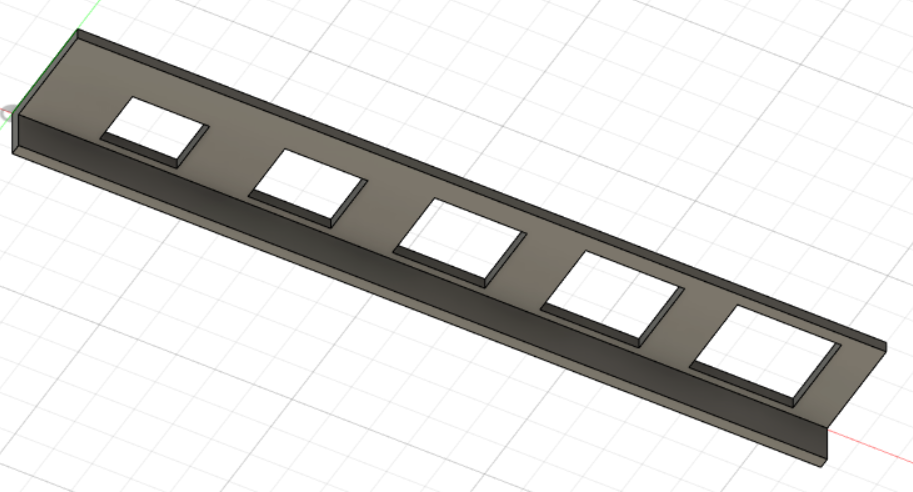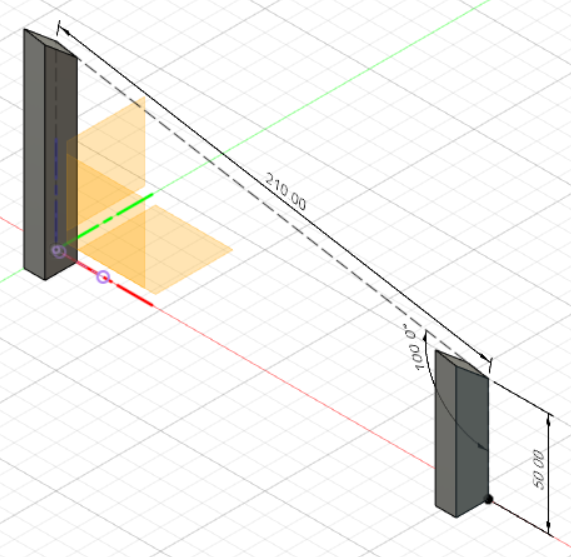My Project: Coin Sorter V1
For my final project in this module, I created did a group project with two of my classmates, Guo Liang and Ethan Ng. We decided to make a automatic coin sorter that will both sort and count coins. The limits of our project (at least for this version of the coin sorter) are as follows:
- can only sort the latest generation of coins (3rd gen Singapore coins)
- requires the user to input coins one at a time into a slot (eventually we planned to make it a pouch/ funnel where the user could pour all their coins in at once)
- maximum sorting speed of roughly 2 coins per second
With these limitations in mind, we proceeded to design and model the 3d physical components
- Overall casing
- Dividers of each type of coin ($1, $0.50, $0.20, $0.10 $0.05)
- Individual boxes to store the coins
- Coin sorting board (a slanted board with holes with increasing sizes for the coins to roll down and fall through)
- Pouch and Wheel (for the user to dump their coins in, followed by the wheel taking out only one coin at a time to put on the sorting board)
And also here are the list of electrical components of our Coin Sorter V1
- Arduino Uno board, the "computer" and "brain" of our sorting system
- Infared Sensors to count the amount of each coin detected
- Stepper motor to rotate the wheel
- LCD screen to display all the information such as amount of each type of coin counted
- Buttons to get around the menu to view information about the sorter and to control the machine
Of course, we divided the work between ourselves to ensure everyone has at least one laser cutting component, one electrical component (embedded micro-controller that is connected to the arduino uno board and one 3D printed component. For me, the components that I have worked on is as follows:
- Laser Cutting: Dividers of each type of coin AND Individual boxes to store the coins
- 3D Printing: Coin sorting board
- Embedded microcontroller: Infared-Sensors (IR sensors) connected to the Arduino Uno board
Laser Cutting
I had two different laser cutting components, the first of which is to make the dividers. I use the used Fusion360 to model the dividers with tabs to connect them easily later on

Video of the assembly of the divider
The same process was done for creating the boxes to collect the coins. The only thing to take note was that I had to make it slightly smaller than the spaces in between the dividers (tolerance) to ensure that I can insert and remove the coin collection boxes with ease


3D Printing
For my 3D printing components, I made a coin sorting board that will be slanted at specific angles with holes of ascending sizes to sort from smallest coins to largest coins. I researched the sizes of the coins from the government website and then added a little bit of tolerence for the coins to fall in. It took me 2 prints to perfect the size and positions of the holes (which im proud of haha). I also had to 3D print the supports as it had to be angled in multiple directions and at a specific angle. Below is the Fusion360 design of my 3D printed coin sorting board AND the supports:


Arduino
For my embedded microcontroller, I coded and attatched the IR sensors. They are attatched just below the holes on the coin sorting boards in order to detect the coins when they drop past the sensors. Below shows the video of the testing phase of the IR sensors where i used tape to position them and test the code.

The coding was neither extremely challenging nor was it a walk in the park, but I felt that my code was definitely NOT elegant nor was it very efficient. However, it worked incredibly well while testing it therefore I decided to continue using this code. The code shown below was done after integrating my own working code with my teammate, Guo Liang's LCD code. Basically, it scans through all the IR sensors in rapid succession one after the other, looking for any sensor that detects an objects. When a sensor detects an object, it records the timestamp down and 'blocks' the arduino from taking further readings from that sensor for a short period of time and adding one to the count of coins for that type (for example, +1 to $0.05 coins as it is the first IR sensor), and continues scanning through the other sensors rapidly. This allows the coin sorter to seemingly multi-task when in actual fact, is just performing actions very quickly.
One part of the code

Final assembly of Coin Sorter V1

This shows the dividers and boxes that I have laser cut being assembled with Guo Liang's overall casing (does NOT include the electrical components NOR the coin sorting board) Just a note, the two holes on the boxes for the coin collection was left for tabs that we added later on to enable removal of the coin boxes without much difficulty.